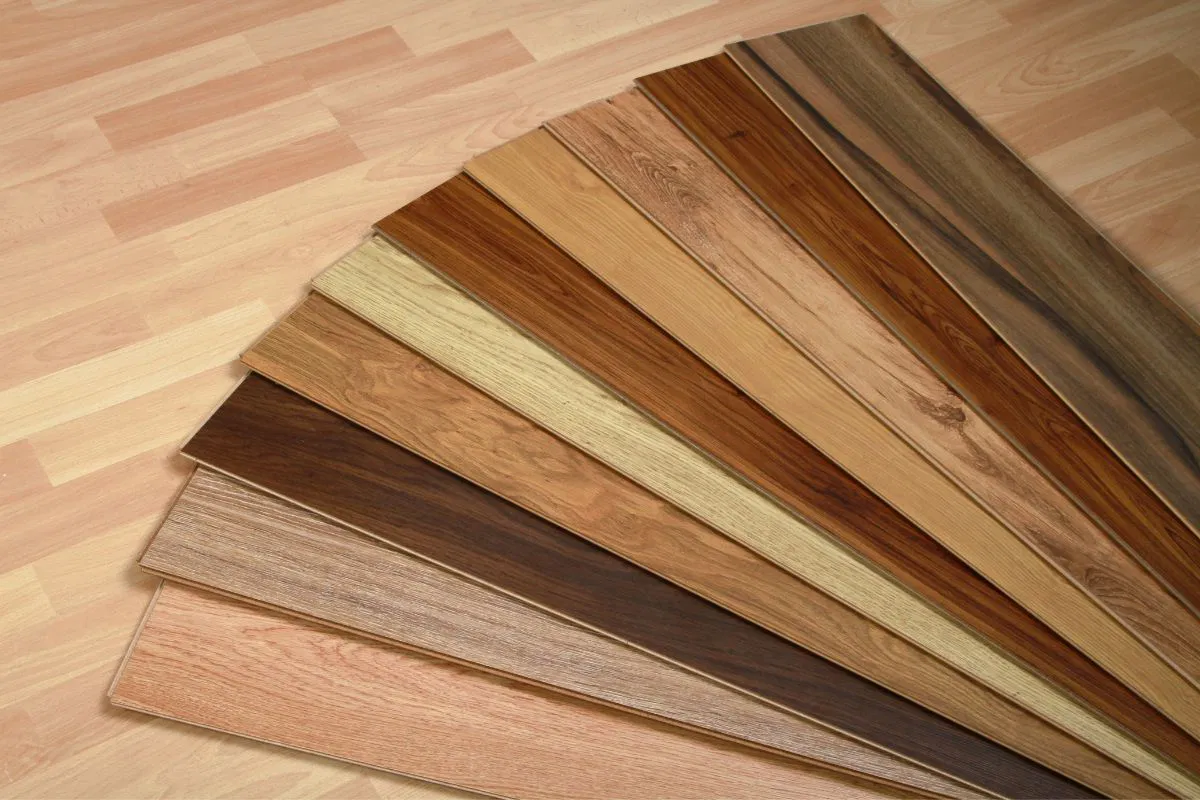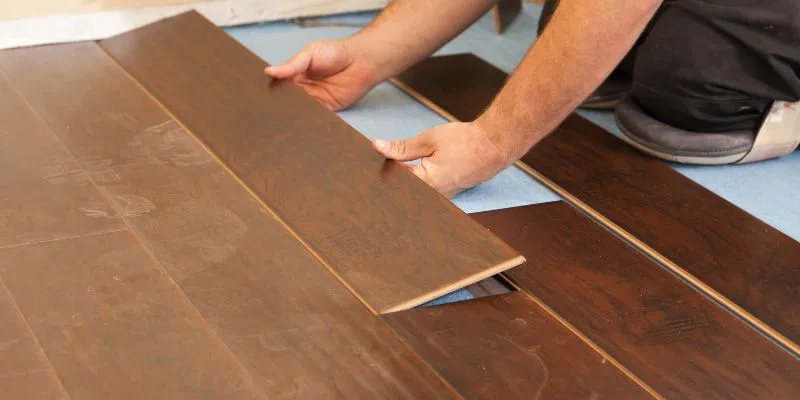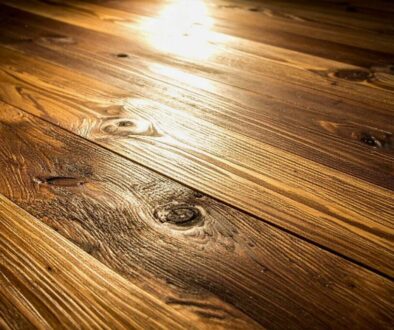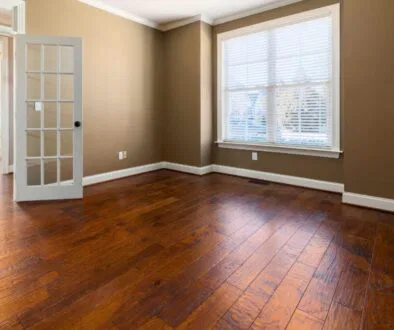Wood Floor Identification: What Type of Wood Floors Do I Have?

Published March 13, 2024
Wood floors exude timeless elegance and natural beauty, but have you ever wondered what type of wood your floors are made of? Identifying the type of wood used in your flooring can add value to your home and help with maintenance and restoration.
In this article, we’ll explore the key characteristics of different wood flooring types and provide insight into how to identify them.
Understanding Hardwood vs. Softwood
The first step in identifying your wood floors is determining whether they are hardwood or softwood. Hardwood floors, such as oak, maple, and cherry, are known for their durability and resistance to wear and tear. Softwood floors, like pine and cedar, are more prone to dents and scratches but offer a unique rustic charm.
Common Types of Hardwood Floors
Hardwood floors are popular due to their durability, timeless appeal, and the variety of wood species available. Each type of wood offers unique characteristics that contribute to a space’s overall aesthetic.
Oak Flooring
Oak is renowned for its prominent grain patterns and warm hues, making it one of the most prevalent choices for wood flooring. It’s durable, affordable, and easy to work with, contributing to its widespread popularity.
Maple Flooring
Maple wood flooring is known for its uniform texture and subtle grain. It often features a light, creamy color that complements modern interior designs. It is a popular choice for its versatility and durability.
Cherry Flooring
Cherry wood floors exhibit a reddish-brown patina that darkens over time, lending an air of sophistication and richness to any space. Cherry flooring is prized for its elegant appearance and timeless appeal.
Walnut Flooring
Walnut wood flooring showcases deep, rich brown tones and elegant grain patterns, adding a touch of luxury to interiors. It’s valued for its distinctive color and unique character.
Hickory Flooring
Hickory is celebrated for its strength and durability, making it an excellent choice for high-traffic areas. Its striking color variations and bold grain patterns contribute to its rustic charm.
These hardwood species are sought after for their natural beauty, longevity, and ability to add character and warmth to homes. When selecting hardwood flooring, it’s essential to consider the unique traits of each wood species and how they align with the desired aesthetic and functionality of the space.
Common Types of Softwood Floors
Softwood flooring is derived from evergreen trees and offers a distinct charm and natural appeal to interior spaces. Some common types of softwood used for floors include:
Pine
Pine is one of the most prevalent softwood flooring choices. It features a warm, inviting appearance, characteristic knots, and a beautiful grain pattern. Pine floors bring a rustic, cozy ambiance to homes.
Spruce
Spruce wood flooring is known for its light, creamy color, and fine grain, which adds an airy and fresh feel to living spaces. It’s a popular choice for those seeking a clean and minimalist aesthetic.
Cedar
Cedar wood floors exude a rich, reddish-brown hue and a distinct aroma that adds a touch of warmth and character to interiors. Cedar is also valued for its natural resistance to insects and decay.
Fir
Fir wood flooring showcases a warm, golden tone and prominent grain patterns, contributing to a welcoming and timeless look. It’s a durable and versatile softwood option for various design styles.
These softwood options offer a range of colors, grain patterns, and characteristics that cater to diverse design preferences, making them sought after for their natural beauty and unique appeal.
Related: Can You Have Wood Floors in a Bathroom? What You Need To Know
Wood Floor Identification
Identifying the type of wood flooring in your home can be intriguing and informative. Here are the steps to help you determine the wood type of your floor:
Step 1: Examine the Grain Pattern
Look closely at the floorboards’ grain pattern. Oak typically has a prominent grain with a recognizable pattern, while maple features a more subtle and uniform grain. Each wood species possesses a distinct grain structure that can aid in identification.
Step 2: Analyze the Color and Texture
Pay attention to the color and texture of the wood. Cherry wood displays a reddish-brown patina, while walnut showcases rich, dark brown hues. The texture of the wood, including its smoothness or roughness, can also provide clues about the wood species.
Step 3: Consider Age and Wear
Assess the flooring’s age and wear. Over time, certain wood species may exhibit characteristic signs of aging and wear, such as color changes or patina development, which can assist in identifying the type of wood.
Step 4: Seek Professional Assistance
If you’re uncertain about the wood type, consider consulting a professional for assistance. Flooring experts or wood specialists can utilize their knowledge and experience to accurately identify the wood species based on visual cues and characteristics.
Step 5: Compare with Known Samples
Compare the appearance of your floor with known samples of different wood species. This visual comparison can help you pinpoint similarities or differences that may indicate the specific type of wood used in your flooring.
Step 6: Use Online Resources
Utilize online resources, such as wood identification guides or forums, to gather information and insights from a community of wood enthusiasts and experts. Sharing photos and details about your flooring can often lead to valuable input and suggestions.

Wood Floor Identification Chart
There are resources available to assist in identifying the type of wood flooring. One such resource is provided by the National Wood Flooring Association (NWFA). They offer a Species Gallery that allows individuals to explore various wood flooring options, from domestic classics to exotic imports. This provides a comprehensive resource for identifying different wood species.
Additionally, guides and charts are available online to aid in wood floor identification. For example, some sources suggest referencing charts like the Janka Hardwood Test to help narrow down the guess based on the physical appearance of the wood. These resources can be valuable for initial identification, but it’s also important to consider seeking professional assistance or utilizing online wood identification guides for accurate determination.
Wood Floor Identification Apps
Several apps are available that can assist in identifying wood flooring. Xylorix PocketWood, for instance, is a free-to-use app that provides information and macroscopic images of various wood species worldwide, offering a valuable resource for identifying different types of wood.
Xylorix Inspector is another app from the same provider that offers automated wood identification through captured macroscopic end-grain images, making the identification of wood species more accessible and convenient.
Moreover, other apps, such as I.D. Wood and MyWood-Id have also been developed to aid in the identification of different wood types. These apps allow users to utilize their smartphones to scan and identify wood samples. These apps leverage technology to provide a practical solution for individuals seeking to identify various wood species, including those used in flooring.
It’s important to note that while these apps can be helpful for initial identification, seeking professional assistance, especially for historic wood floor identification, is beneficial. You can also utilize online wood identification guides to determine the type of wood used in your flooring accurately.
Final Thoughts
Identifying the type of wood floors in your home can be an enriching experience, allowing you to appreciate the natural beauty and characteristics of the wood. Whether you have oak, maple, cherry, pine, or walnut floors, understanding the distinctive traits of each wood species empowers you to make informed decisions regarding maintenance, refinishing, and overall care. Embrace the uniqueness of your wood floors and let their inherent charm elevate the aesthetic appeal of your living spaces.
Hire The Timber Experts For Your Next Project
Vintage & Specialty Wood should be your source of the highest quality timbers from around the world. When it comes to fabricating and installing reclaimed wood or specialty wood products in your home, we don’t cut corners. We offer many reclaimed wood and specialty wood products such as Douglas Fir, white oak, and much more. We also offer timber framing and wood flooring services as well. Contact our team today to speak to a timber expert about what Vintage & Specialty Wood can do for you.

This Blog Is Fact Checked
This content has undergone meticulous fact-checking by our team of internal experts. Gain a deeper understanding of the high editorial standards we uphold on our website here.

About The Author
Experience, exploration, and knowledge are the hallmarks of writer Rei Bayucca. Her dedication to crafting articles that both inspire and educate will leave you thinking long after you’ve finished reading.




